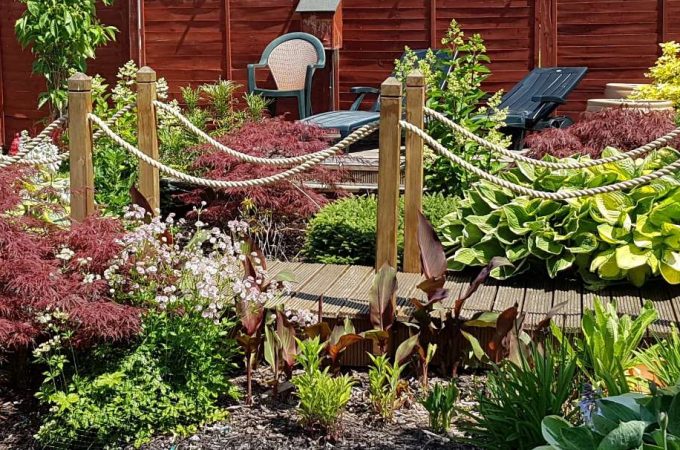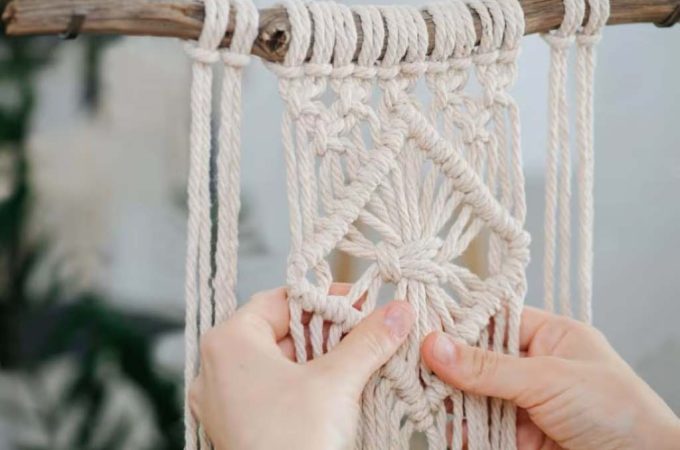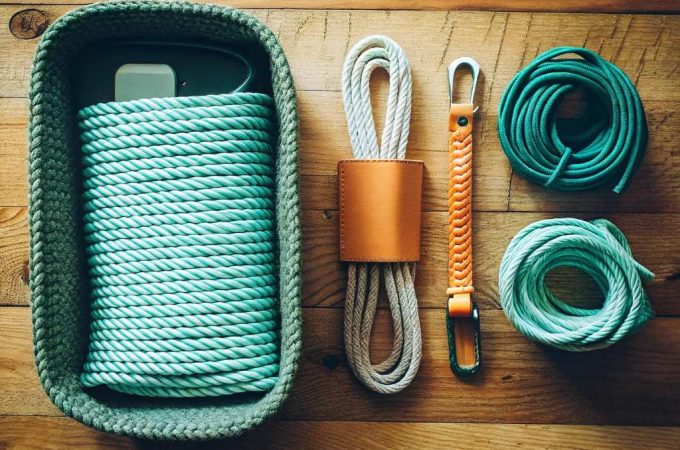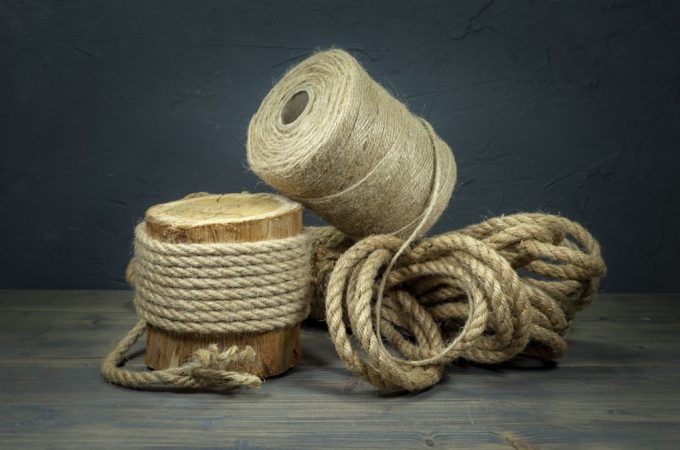
How to Finish Jute Rope: Expert Tips for Durability
To finish jute rope, apply a clear-drying adhesive to the ends and let it dry. Alternatively, you can bind the ends with twine or heat-seal them.
Contents at a Glance
ToggleJute rope has a natural, rustic appeal, making it a popular choice for crafts and home decor. Finishing the ends of jute rope is crucial to prevent fraying and maintain the integrity of your project. Ensuring a clean finish can extend the life of your rope and give your work a professional touch.
Whether you are using jute rope for macramé, gardening, or nautical-themed designs, understanding the best practices for sealing the ends is a valuable skill. With a few simple tools and techniques, you can achieve a secure and attractive finish, enhancing the overall quality and appearance of your projects. Remember that the longevity of jute rope largely depends on how well the ends are finished, so take the time to do it right.
Introduction To Jute Rope Finishing
Finishing jute rope is crucial for its longevity and durability. Properly sealed ends prevent fraying, making the rope more reliable for various uses. Yet, maintaining jute rope can pose challenges. Exposure to moisture and pests can degrade its quality over time. Hence, applying the right finish is essential for protecting the rope from such elements.
Owners often struggle with preventing mold growth and combatting natural wear. Regular checks are needed to ensure no early signs of damage appear. By understanding these challenges, jute rope users can take proactive steps in care and maintenance.
Selecting The Right Jute Rope
Choosing the right jute rope is essential for any project. Durability, thickness, and flexibility are key factors to consider. Ensure the rope can handle the intended weight and usage. Natural jute ropes are great for crafts and decoration, while treated options are better for outdoor applications.
| Type | Use |
|---|---|
| Natural Jute | Art projects, Gift wrapping |
| Treated Jute | Gardening, Outdoor tasks |
For heavy-duty tasks, select a rope with high tensile strength. Soft jute rope is perfect for handicrafts and delicate items. Always check the product specifications before purchasing.
Preparation Steps Before Finishing
Before finishing jute rope, ensure it’s clean. Begin by laying the rope flat. Remove any dirt or debris using a soft brush. Work along the rope’s length, brushing in the direction of the fibers.
To straighten and untangle the rope, gently pull through your hands. This eases out knots and kinks. Be careful not to twist the fibers. A smooth, straight rope is ready for the next step.

Credit: m.youtube.com
Sealing The Ends Of Jute Rope
To seal the ends of jute rope, certain techniques are essential. A common method is to cut and melt the fibers. Using a sharp knife or scissors, trim the rope cleanly. Immediately after cutting, apply heat to the end. This can be done with a lighter or a heat gun. The heat causes the fibers to fuse, preventing fraying.
Another effective approach involves adhesive-based sealants. Apply a generous amount of glue to the rope’s end. Wood glue or rubber cement works well for this purpose. Allow the sealant to dry completely before handling the rope again.
For a traditional finish, use a technique called whipping. This involves wrapping thread or twine tightly around the rope’s end. Secure the wrap with a knot.
Protective Treatments For Jute Rope
Protecting jute rope is essential for maintaining its durability and strength. Natural oil treatments are one of the simplest methods to achieve this. Applying oils such as linseed or tung can prevent the rope from drying out and fraying. It’s important to evenly coat the fibers and allow them to absorb the oil thoroughly.
On the other hand, wax coating techniques offer additional protection. The process involves melting beeswax and applying it over the rope. This method not only preserves the rope but also adds water resistance. After coating, it’s crucial to let the wax set before using the rope.
Drying And Curing Process
Drying jute rope requires specific conditions to ensure effective curing. Adequate air circulation is crucial for even drying. Humidity levels should be low to moderate to prevent mildew. Temperatures need to be warm but not too hot to avoid damaging the fibers.
The curing process is essential for strength and durability. It typically spans a few days to a week, depending on environmental factors. Direct sunlight can speed up the process but may lead to uneven drying. It’s important to rotate the rope periodically for uniform drying.
| Condition | Requirement |
|---|---|
| Air Circulation | Good |
| Humidity | Low to Moderate |
| Temperature | Warm |
| Light Exposure | Indirect Sunlight Preferred |
Testing For Durability And Strength
Testing jute rope for durability and strength ensures longevity and safety. Stress testing methods play a crucial role in this process. These methods involve applying force to the rope to assess its performance under various conditions. To effectively identify weak spots, one must conduct a series of tests. These include tensile strength tests, where a pull force measures the rope’s resistance to breaking.
A common approach is the bend test, which reveals the rope’s flexibility and endurance when looped. It is also beneficial to perform abrasion resistance tests, as jute ropes are often subjected to surface wear. Lastly, knot testing can expose potential weaknesses when the rope is tied. A comprehensive analysis of these tests ensures that the jute rope will perform reliably.

Credit: www.amazon.com
Maintenance And Care Tips
Maintaining jute rope is essential for its longevity. Regular cleaning is key. Use a soft brush to remove dirt. Always dry the rope thoroughly to prevent mildew. For storage, keep jute rope in a cool, dry place. This prevents moisture damage and maintains its strength.
Finishes on jute rope protect its fibers. These may wear over time. Inspect the rope regularly for signs of wear. Reapply finishes as needed. This ensures the rope remains durable. Proper care extends its life.
Troubleshooting Common Issues
Jute rope can sometimes fray or break, but don’t worry. To prevent fraying, seal the ends with clear glue or tape. If breakage occurs, try splicing the rope by untwisting the ends and interweaving them. This method reinforces the rope’s strength. For larger ropes, consider using a jute yarn to bind the broken sections.
Mold and mildew are common issues but easy to tackle. Ensure the rope is dry before storage. Use a solution of bleach and water for cleaning. Always wear protective gloves and ventilate the area. Once clean, dry the rope thoroughly to prevent future growth. Regular maintenance keeps the rope strong and durable.

Credit: www.walmart.com
Conclusion: Ensuring Longevity Of Jute Rope
Jute rope is both durable and environmentally friendly. To maintain its quality, apply proper care. Always store jute rope in a cool, dry place. Avoid exposure to moisture to prevent mildew. Use appropriate knots that don’t stress the fibers. Regularly check for fraying or damage. If found, trim the frayed ends to avoid further unraveling.
Through consistent care, you can extend the life of your jute rope. This supports eco-friendly practices. By following these steps, you contribute to sustainable living. Your jute rope will remain strong and functional for many uses.
Frequently Asked Questions
How To Finish Jute Rope Ends?
Seal jute rope ends by applying clear glue, using heat to lightly singe, or wrapping with thin wire. Taping before cutting prevents fraying. Sealants or whipping with thread also work well.
How Do You Seal A Jute Rope?
Seal jute rope by applying a clear, waterproof sealant. Let it dry thoroughly. Repeat if necessary for extra protection.
What Oil Do You Use On Jute Rope?
For conditioning jute rope, use natural oils like linseed or tung oil for best results. These oils preserve the rope’s strength and flexibility.
What Can I Use To Finish The End Of A Rope?
To finish a rope end, use methods like whipping, fusing, or applying an end cap. These techniques prevent fraying and ensure durability.
Conclusion
Wrapping up your jute rope project is a breeze with the right techniques. Remember to seal the ends, use waterproofing treatments, and store it properly for longevity. Your jute rope will now withstand the test of time, ready for whatever task lies ahead.
Happy crafting and preserving!





